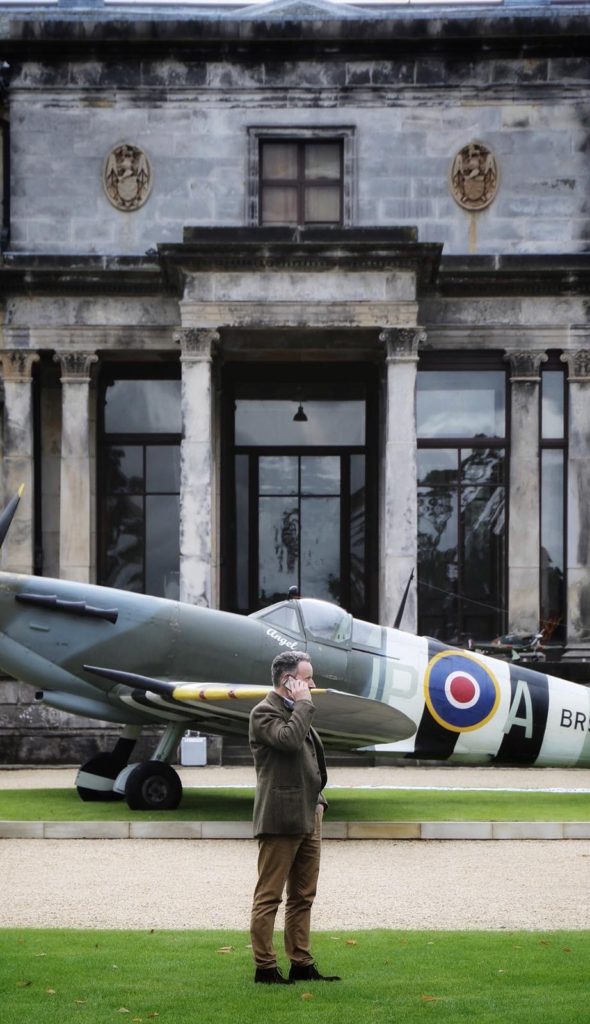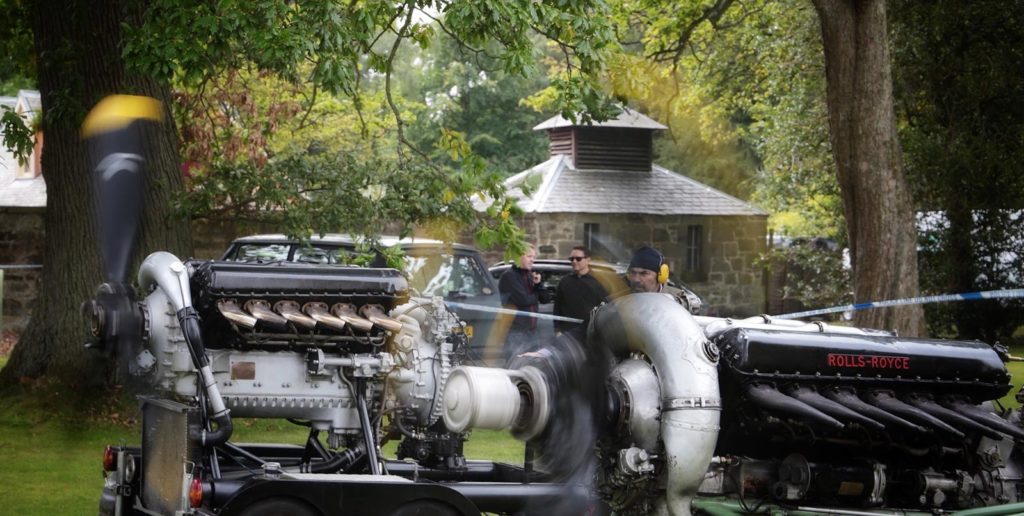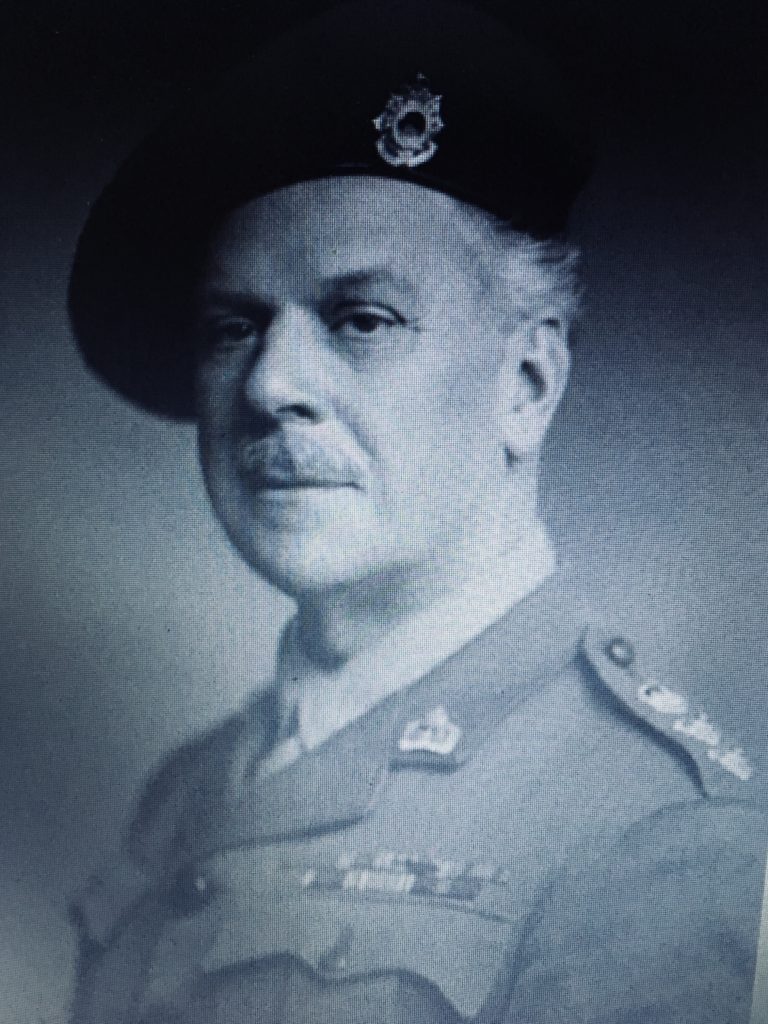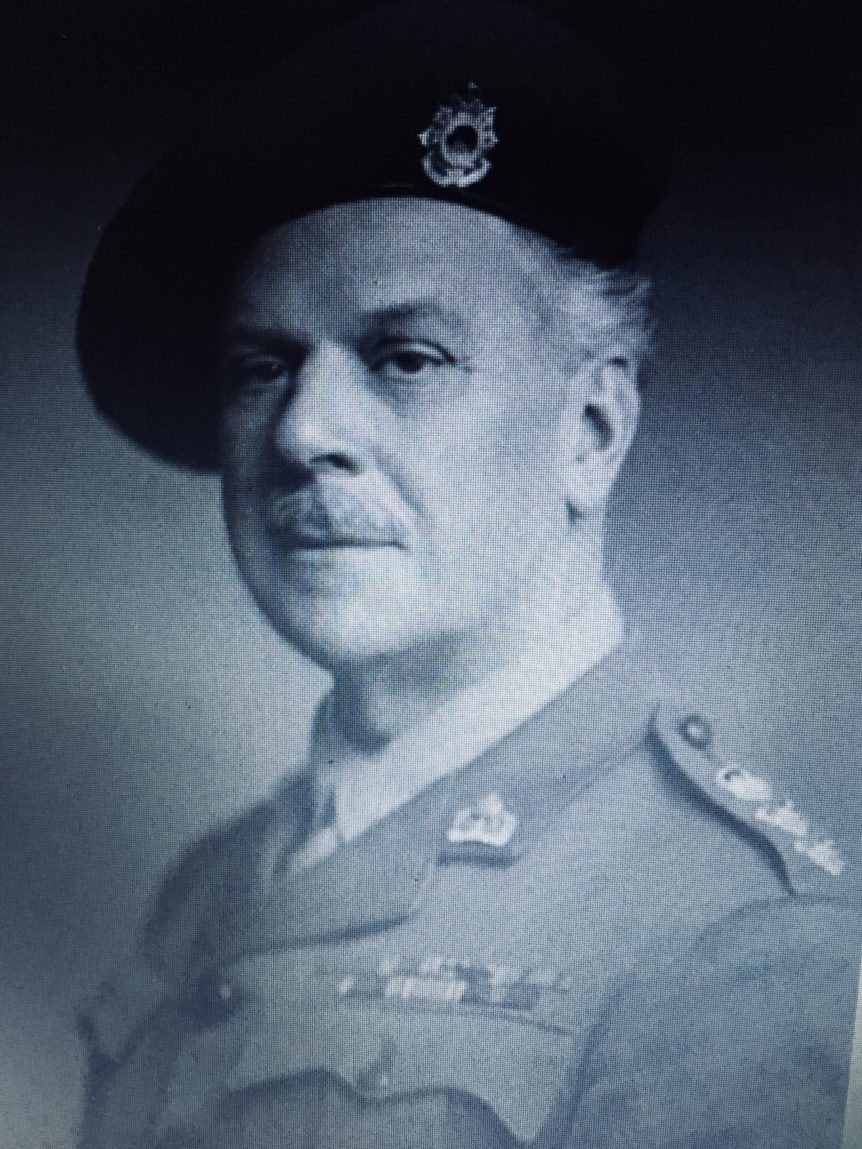On 10th July 1940 the Luftwaffe unleashed the first of many bombing raids on the British mainland. It was the first major military campaign fought entirely by air forces. The battle in the skies over the south of England lasted for 112 days until 31st October when finally the Luftwaffe admitted defeat having lost 1,887 planes and 2,662 aircrew. However, large scale night bombing raids over British cities continued until 11th May 1941, resulting in the deaths of more than 40,000 civilians.

Full size model of Supermarine Spitfire Mk1, the type which flew sorties during the Battle of Britain, parked at Broomhall House at an event supporting the RAF Benevolent Fund, September 2018 (Vikki Bruce)
Powering the RAF’s front-line fighters – the Supermarine Spitfire and Hawker Hurricane – defending British air space was the 12 cylinder Rolls-Royce Merlin engine. The aeronautical historian Leo McKinstry writes,
“…the two legendary fighters destroyed the Reich’s hopes of mounting an invasion…but these aircraft would have never achieved that success without the…Merlin engine”.
Although the Merlin was first flown in 1935, it continued in production for over a decade, increasing in output from 950 hp to reach bursts of 2,640 hp by 1945. No other piston aero-engine, in continuous production, recorded such a dramatic improvement in combat performance in the Second World War.

1,000 hp Merlin engine at full throttle, at Broomhall House, September 2018 (Vikki Bruce)
Over the course of the war 160,000 Merlin engines were supplied to aircraft factories in the UK, Canada and the United States. They were widely deployed in at least 17 different types of operational aircraft including the Avro Lancaster, the de Havilland Mosquito and the Mustang P-51. But what is not so widely known is the fact that of the 100,000 Merlin engines built in British wartime factories, almost 25% were manufactured in Scotland at Hillington in Renfrewshire.
Hillington, the first industrial estate to be built in Scotland, was the initiative of Edward Bruce, 10th Earl of Elgin and his fellow members of the Scottish Economic Committee. With funding from the Air Ministry, a “shadow factory” was built here in 1937 with the intention of persuading Rolls-Royce to establish a significant engineering plant in Scotland. The first Merlin engines began to roll off the production-line just before the outbreak of war in September 1939.

Edward James Bruce, 10th Earl of Elgin (1881-1968) in the uniform of a colonel in the Canadian Army, 1940
By 1943 the Hillington plant was turning out 400 engines a week, peaking at 100 engines a day. By the end of the war 23,500 new engines had been manufactured here, in an industrial plant that was barely two years old when war broke out. By extraordinary good fortune, the Rolls-Royce factory was never hit by a German bomb, despite the devastating raids on Clydebank in March 1941 when Glasgow was attacked by 200 bombers over two consecutive nights.

